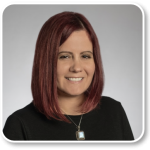Government/Policy
August 13, 2024
Commerce revises AD/CVD rates on Korean galv
Written by Laura Miller
The Department of Commerce’s International Trade Administration issued the preliminary results of administrative reviews of the antidumping and countervailing duties (AD/CVDs) on corrosion-resistant steel (CORE) products from South Korea.
The preliminary results are mixed. Some companies’ dumping rates were adjusted upward, and some downward, while most countervailable subsidy rates ticked higher.
ITA intends to issue the final results of both reviews by Dec. 10.
Recall that South Korea has an absolute quota in place in lieu of Section 232 tariffs. Its 2024 hard limit is 183,326 short tons (st) of hot-dipped galvanized flat-rolled products and 210,366 st of coated flat-rolled products. Quarterly quotas are also in place. These limits can not be surpassed; excess material must be warehoused or shipped out of the country until the quarterly quota resets.
AD
Commerce preliminarily found that certain CORE products from Korea were sold in the US at prices below normal value during the one-year period of July 1, 2022, through June 30, 2023.
| Period of review | 2022 calendar year | 2021 calendar year |
|---|---|---|
| Producer/exporter | ||
| Dongbu companies | 5.49% | 6.48% |
| Hyundai companies | 0.80% | 0.82% |
| Posco companies | 2.68% | 1.60% |
| SeAH companies | 2.68% | 1.60% |
Source: Department of Commerce’s International Trade Administration
CVD
Commerce’s preliminary determination is that countervailable subsidies are still being provided to CORE producers and exporters in Korea.
| Period of review | July 1, 2022 to June 30, 2023 | July 1, 2021 to June 30, 2022 |
|---|---|---|
| Producer/exporter | ||
| Dongbu companies | 1.74% | 0.53% |
| Dongkuk companies | 1.74% | 0.53% |
| Hyundai companies | 0% | 0% |
| Posco companies | 1.74% | 0.53% |
| SeAH companies | 1.74% | 0.53% |
Source: Department of Commerce’s International Trade Administration
The CVD rate for the Hyundai group of companies continues to be 0% as it has had no shipments to review during the review periods.
Editor’s note: This story has been updated to reflect that South Korea has an absolute hard quota in place and not a tariff-rate quota, as was originally published.







